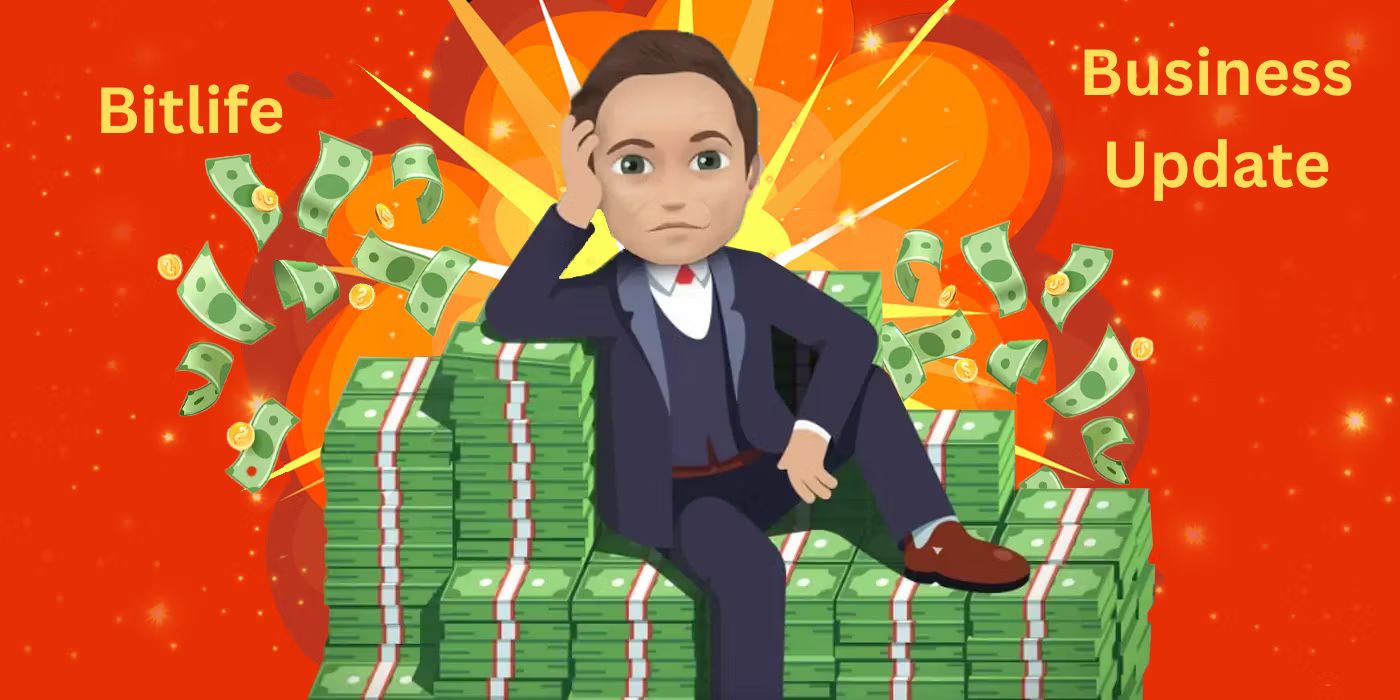Wanted to become a supermodel or an astronaut, but real life had other plans? Don’t worry; BitLife makes it possible.
This game allows players to take control of virtual characters’ lives from the beginning to the end, and your character can be whoever you wish them to be.
On the same note, entrepreneurship is one of many careers you can choose for your character.
This career is not just about profits and losses; it’s about making smart decisions and having fun.
This guide is here to show you how to make your business a big success in BitLife.
How to Start a Business in BitLife
The first step to starting a business in BitLife is to purchase the Business Job Pack or the Boss Mode pack.
It’s only with one of these that you can run and manage a company.
To start a business in BitLife, you’ll need at least $1,000,000 in capital.
After that, choose the type of business you want to run.
Look for a company or product with high demand and low competition – you’ll find this information under each company’s name in the business selection menu.
Getting Started With a Product Line
Once you’ve selected your company, it’s time to dive in.
Start by creating your first product line, but not before doing some market research.
Be creative and choose products that are trending or have strong demand.
At the same time, allocate a portion of your budget to marketing.
Marketing helps you create awareness and build a customer base.
However, don’t overspend right away.
Start small, analyze your results, and then scale up your marketing budget as your company grows.
Maintaining Your Business’s Success
Just like in real life, a company’s success in BitLife depends on the happiness and productivity of its employees.
Make sure your staff are well-paid and satisfied with their jobs.
Reward high performers and consider giving yearly bonuses when the company performs well.
You’ll also receive business performance reports as you age.
These reports show your sales, revenue, and expenses.
Use them to analyze your company’s growth and decide when it’s time to expand.
Expansion can increase profits, but don’t rush into it – only invest when your business is truly stable.
Best Businesses in BitLife (Ranked by Profitability)
If you’re unsure where to begin, here are some of the most profitable businesses in BitLife:
1. Winery Business
The BitLife winery business is one of the best for long-term success.
Wine has strong demand, and production costs are manageable.
A well-planned marketing strategy can make this business highly profitable.
2. Semiconductor Business
The BitLife semiconductor business can bring massive profits, especially when the market demand is high.
However, competition may increase over time, so focus on production quality and consistent upgrades.
3. Robotics Business
Starting a BitLife robotics business can be expensive, but it’s one of the most profitable business types when managed properly.
Production plans and marketing budgets are crucial to success here.
4. Car Manufacturer
The BitLife car manufacturer guide is popular because car companies generate large profits when run efficiently.
However, they require more capital and a strong production plan.
5. Drug Manufacturer
A BitLife drug manufacturer business can also be lucrative if managed carefully.
Focus on product quality, research, and balancing marketing with production.
6. Food Truck
If you want something smaller, the BitLife food truck is a fun and low-risk option to start learning the basics of running a business.
Understanding the Production Plan System in BitLife
Your production plan determines how efficiently your company creates products.
It directly impacts your revenue and profit margins.
A good BitLife business production plan balances:
- Production quantity
- Marketing spending
- Quality control
Avoid overproducing, as unsold inventory will hurt your profits.
Instead, monitor your reports and adjust your plan to match market demand.
If you’re wondering which is the best production plan in BitLife, it’s the one that maintains consistent sales without overspending on marketing or manufacturing.
BitLife Marketing Cost Explained
Many players often ask:
“What does marketing cost mean in BitLife?”
In simple terms, your marketing cost is the amount you spend to promote your business and increase sales.
It affects how visible your company is and how many customers you attract.
Spending too little can make your business unknown.
Spending too much can cut into profits.
The key is to find a balance — start small, test results, and increase spending only when you see real growth.
Your marketing cost in BitLife should always match your company’s size and product demand.
For example, a global car company should spend more than a small food truck.
CEO Tips and How to Improve CEO Performance in BitLife
Becoming a CEO in BitLife is a major milestone.
As CEO, you control decisions like production, marketing, and expansion.
To improve your CEO performance in BitLife, focus on:
- Maintaining high company morale
- Keeping employees happy and well-paid
- Balancing your product’s quality and price
- Expanding strategically
- Monitoring your financial reports regularly
If your CEO performance drops, analyze the company’s weaknesses.
Low profits, overproduction, or unhappy employees often cause poor CEO ratings.
A good CEO in BitLife always takes data-driven decisions and avoids unnecessary risks.
Best Country for Business in BitLife
Choosing the best country for business in BitLife can make a big difference.
Some countries offer higher profits, lower costs, or better market potential.
Countries like the United States, Germany, and Japan are often considered among the best countries to start a business in BitLife because they have high consumer demand and strong economies.
However, smaller markets can sometimes be more profitable if competition is lower.
The key is to pick a country where your products can sell easily and your company can grow steadily.
Stock Market and Business Finance in BitLife
BitLife’s stock market allows you to invest in other companies and grow your wealth over time.
You can also buy shares to earn dividends or sell them for profit when prices rise.
If your business takes a loan, make sure to pay it off as soon as you’re financially stable.
Unpaid loans can eat into profits and slow down expansion.
Monitor your revenue and expenses regularly.
If you notice that your company is losing money, check your production plan, marketing cost, and employee satisfaction — these are usually the main causes.
BitLife Business FAQs
You may be overspending on marketing or production, or your products might not be selling due to high competition.
The truck icon represents product shipment and logistics. It shows that your products are being distributed.
Go to your company dashboard, select “Create Product,” and choose the product type. Always research demand before launching.
Running a successful business is one of the best ways to make money fast — especially if you choose a profitable industry like semiconductors or robotics.
The Winery, Robotics, and Semiconductor businesses consistently rank as the best and most profitable options.
Final Tips for Running a Successful Business in BitLife
Success in BitLife business is about strategy, patience, and smart decisions.
Always analyze your reports, balance production and marketing, and treat your employees well.
Every business in BitLife has the potential to succeed — the key is how you manage it.
With the right planning and a bit of in-game experience, your company can become the most profitable in the virtual world of BitLife.







[…] In this guide, you’ll learn exactly how to become a CEO in BitLife, step by step. We’ll explore two main paths: climbing the corporate ladder and building your own business empire. […]
[…] your business reaches extreme profitability, your income will skyrocket into the hundreds of billions, eventually […]